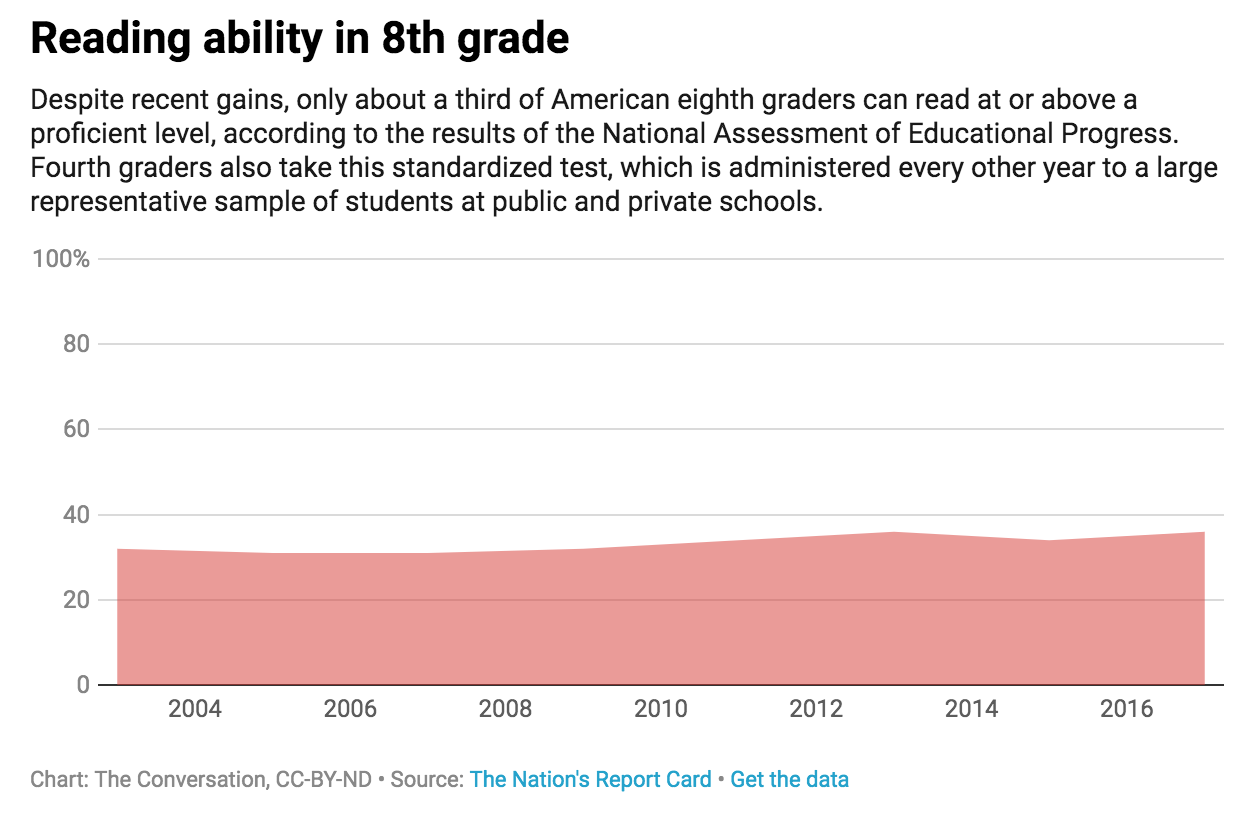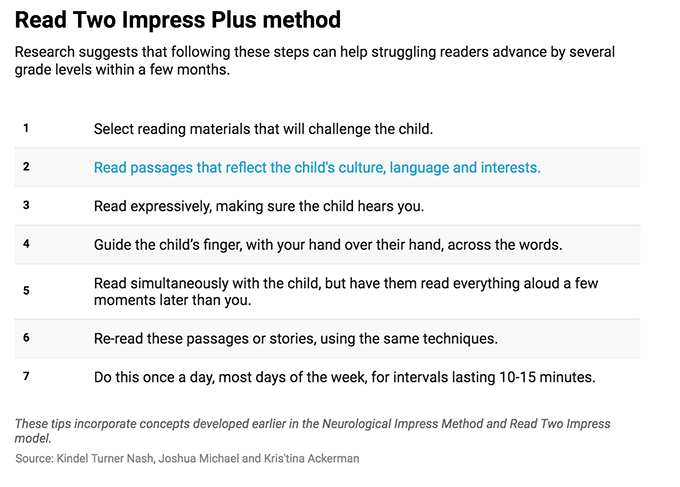
Because I conduct research about reading, parents often ask me the same question: “What can I do to help my child become a better reader?”
I always give them the same advice: “Read with your children. Enjoy books together, and whatever you do, don’t worry about teaching them to read. Leave the teaching to the teachers.”
This reply draws on my research regarding the literacy practices of high-performing teachers, as well as my experiences as a parent, teacher and literacy specialist. Ample evidence indicates that a solid foundation of reading, writing, talking and playing with words fosters a love for books at an early age and leads to later success as a reader.
But what happens when children do not learn to read, or when they struggle with reading? That problem is all too prevalent. Only about a third of all eighth-graders can read at or above grade level.

Successful teachers
I have studied how successful teachers at multiple high-performing urban schools in New York, Ohio, Missouri and Maryland are helping struggling readers dramatically improve their reading fluency. Many are getting children to read passages multiple times.
Teachers and researchers have found that doing this almost always leads to improvements for struggling readers between second grade and the end of high school.
For kids, this strategy is a lot like learning a new song by reading lyrics while singing along with a music video. When children practice reading this way, they listen to and echo a more experienced reader while tracking the print with their eyes and touching the phrases of the book as they read and reread the book together.
By activating the senses of hearing, seeing and touch, this approach makes recognizing familiar words easier and faster, increasing fluency. The strategy works best when it’s repeated regularly – ideally 10-15 minutes per day. Considering the millions of children who don’t read at grade level, it’s very important.
Digging deeper
Psychologist Robert G. Heckelman first identified this method of repeated reading in the 1960s. He encountered an adolescent whose reading level increased by three grades after being tutored using this system. Heckelman repeated the method with 24 middle and high school students who were struggling with reading.
After just 7.5 hours of instruction in what he called Neurological Impress Method, students advanced by an average of two grade levels.
Those findings were later replicated with greater numbers of children, leading to a study published in 2016. In that study, the literacy researchers Chase Young, Timothy Rasinski, and Kathleen Mohr called the method “Read Two Impress.”
This new name reflected a change in the method: Kids had to read each page aloud after their tutors finished reading it to them. In addition to making kids better readers, Read Two Impress also helps them become more confident and spend more time reading.
Empowering families
Yet the Read Two Impress method, until now, has never formally involved a child’s family. Additionally, no studies of this strategy have investigated the impact of using books that reflect student culture and language.
To see if his strategy would be effective as a tool for families to use to improve their children’s reading, I partnered with co-researchers, Joshua Michael and Kris’tina Ackerman. Together, we conducted a study over 10 weeks at a school in a large Northeastern city.
There were some hurdles. For example, the grandmother of a thoughtful and inquisitive child expressed anxiety about her lack of confidence and perceived ability to read. “I’m not much of a reader myself,” she told us during the first training. “I don’t know if I can help my grandchild with reading.”
She, along with 25 second-graders and some of their relatives, participated in five training sessions.
In the final one, the adult participants described how they were teaching this strategy to others. They told us they believed similar opportunities should be broadly available. This in turn prompted us to host an open training for the whole school and a group of teachers-in-training.
This time, the grandmother, once apprehensive, helped facilitate the training. She had gained confidence in her ability to teach this learning strategy to others.
We also found that when families read books that reflected their culture and language, they enjoyed reading together more. In particular, we learned through surveys and focus groups that parents and other guardians took pride in playing a role in helping their kids become better readers.
We will publish the results of the more expansive approach to the strategy, which we call “Read Two Impress Plus,” in an academic journal.

Author Bio: Kindel Turner Nash is anAssociate Professor of Early Childhood Education, University of Maryland, Baltimore County
UMBC doctoral students Joshua Michael and Kris’tina Ackerman contributed to the study of Read Two Impress and this article.
